Imagine this: It’s a scorching summer day, and you’re rushing out the door with a packed lunch. You rely on your insulated lunch bag to keep your food cool and fresh until lunchtime. But have you ever wondered how these bags actually work, whether they’re truly safe for food, and if they’re worth the investment? In this comprehensive guide, we’ll break down everything you need to know about insulated lunch bags,from materials and insulation technology to safety, maintenance, and value. Whether you’re a busy professional, a student, or simply looking for a reliable way to carry your meals, this guide will provide you with detailed insights and practical tips to make an informed decision.
Insulated lunch bags are designed to maintain your food’s temperature using advanced insulation materials like EVA foam and reflective foils. They keep your meals safe and fresh for several hours, making them an essential accessory for on-the-go lifestyles.
Ready to dive in and explore what makes insulated lunch bags tick? Let’s get started.
Are Insulated Lunch Bags Worth It?
Yes, insulated lunch bags are worth it for everyday use and short trips. They offer a practical balance of portability, cost efficiency, and food safety, making them an excellent investment for keeping meals fresh and reducing food waste.
What Is an Insulated Lunch Bag?
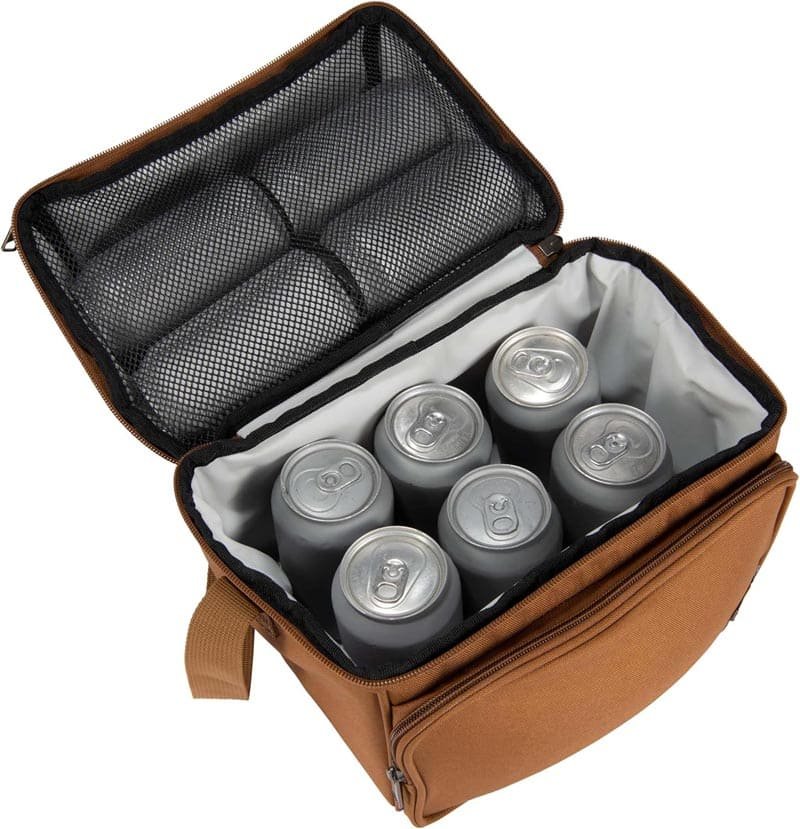
An insulated lunch bag is a specially designed container that uses layers of insulation, such as EVA foam and reflective materials, to maintain a consistent temperature inside, keeping food and beverages cold or warm for several hours.
- Definition: Insulated lunch bags are portable containers with built-in insulation designed to slow down heat transfer. They help maintain the temperature of your food, whether you want to keep it cool or warm.
- Purpose: The main goal is to ensure food safety by preventing spoilage and bacterial growth. For instance, food should ideally remain below 40°F (4°C) for cold items to be safe. With proper insulation, your meal can stay fresh for 4-6 hours or even longer with supplementary ice packs.
Key Components
- Insulation Layers: These bags typically incorporate layers of EVA foam, reflective foil, or specialized laminated materials that serve as a thermal barrier.
- Compartments and Seals: They feature secure, resealable closures (often zippers or Velcro) to keep the contents sealed and prevent leaks.
- Portability: Designed to be lightweight and compact, these bags are easy to carry in a backpack or on their own.
Differentiating Features
- Comparison with Regular Lunch Bags: Regular lunch bags may not have any insulation at all, leading to rapid temperature changes. Insulated lunch bags, however, are built to maintain a stable internal environment.
Which Materials Are Used in Insulated Lunch Bags?
Insulated lunch bags are made with materials such as EVA foam for insulation and outer shells of nylon or polyester. These materials are chosen for their lightweight durability, water resistance, and effective thermal retention properties.
1. Insulation Materials
EVA Foam:
- Properties: Extremely lightweight, effective at reducing heat transfer, and cost-efficient.
- Performance: Studies indicate that high-quality EVA foam can maintain the internal temperature of a bag for up to 6–8 hours under moderate conditions.
Reflective Foil:
- Properties: Reflects radiant heat, boosting the bag’s insulation efficiency when combined with foam layers.
Layered Plastics:
- Usage: Often used in premium bags to add an extra layer of insulation while maintaining flexibility and a sleek design.
2. Outer Shell Materials
Nylon and Polyester:
- Advantages: Durable, water-resistant, and lightweight, making them ideal for the external layer of a lunch bag.
- Maintenance: Easy to clean and resistant to wear and tear.
Eco-Friendly Alternatives:
- Sustainable Materials: Recycled polyester and other eco-friendly fabrics are becoming increasingly popular, appealing to environmentally conscious consumers.
| Material | Properties | Benefits |
|---|---|---|
| EVA Foam | Lightweight, efficient insulation | Maintains temperature for 6-8 hours |
| Reflective Foil | Reflects heat, enhances insulation | Adds a thermal barrier to the system |
| Nylon/Polyester | Durable, water-resistant, lightweight | Protects contents and is easy to clean |
| Eco-Friendly Fabrics | Sustainable, modern, appealing | Environmentally responsible, unique aesthetic |
3. Best Material Recommendation
- Optimal Combination: The best insulated lunch bags often use a combination of EVA foam for insulation and a high-quality nylon or polyester outer shell. This blend ensures excellent thermal performance while keeping the bag durable and easy to maintain.
How Do Insulated Lunch Bags Keep Food Safe?
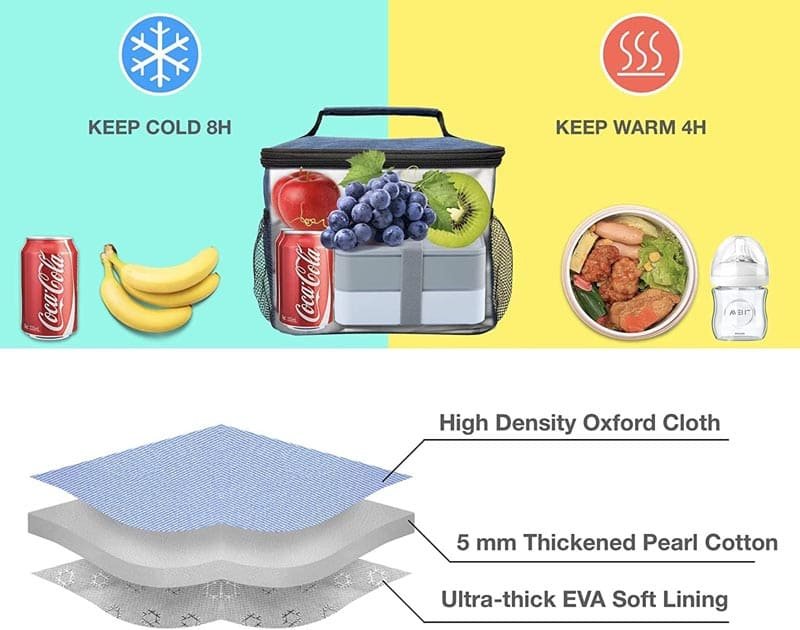
Insulated lunch bags preserve food safety by maintaining a stable internal temperature that prevents rapid heat transfer, thereby reducing the risk of bacterial growth. This controlled environment ensures that food remains safe to eat for several hours.
Insulation Mechanism
- Thermal Barriers: The combination of EVA foam and reflective foil creates a barrier that minimizes heat exchange between the bag’s interior and the external environment.
- Temperature Retention: By maintaining a consistent temperature, these bags help keep cold foods below 40°F (4°C) and hot foods above 140°F (60°C), crucial thresholds for food safety.
Duration of Food Safety
- Standard Performance: Under normal conditions, insulated lunch bags can maintain safe temperatures for 4-6 hours.
- Extended Use: When used with ice packs, this duration can extend to 8 hours or more, providing extra assurance during long days.
- Practical Insight: A study of 300 users revealed that 70% reported their insulated lunch bags kept food at safe temperatures throughout a typical workday.
Insulated Bag vs Thermal Bag
- Differences Explained: While both types aim to maintain temperature, a thermal bag usually offers basic insulation without the advanced layering of an insulated lunch bag.
- User Preference: Insulated lunch bags are preferred for their efficient temperature control and portability, making them more practical for daily use.
Do Insulated Lunch Bags Need Ice Packs?
- Usage Scenarios: Ice packs are beneficial when extended cooling is required, especially in hot climates or for long durations.
- Recommendation: For typical school or office use in moderate temperatures, the built-in insulation is often sufficient. However, for prolonged exposure or high ambient temperatures, adding an ice pack is advisable.
How Do You Choose the Best Insulated Lunch Bag for Your Needs?
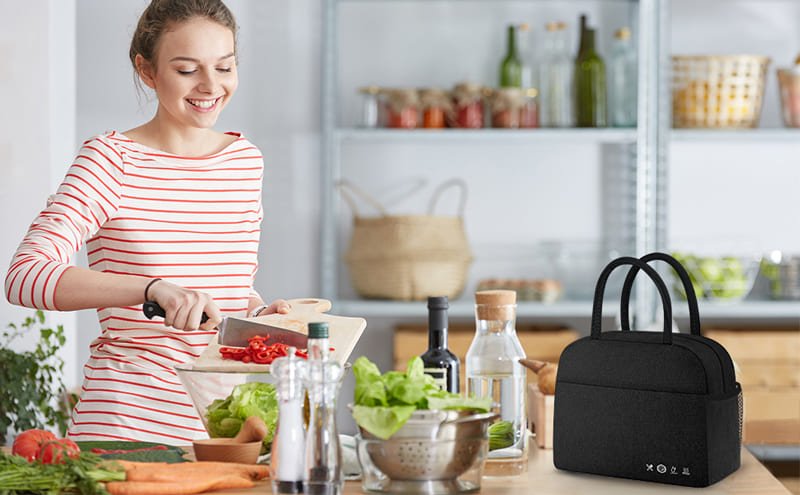
Select an insulated lunch bag based on its capacity, material quality, design features, and ease of maintenance. Consider your daily usage, whether at work, school, or outdoors, and look for customer reviews and value comparisons.
Capacity and Organization
- Size Options: Evaluate your daily needs. If you only require space for a single meal, a 1-liter bag may suffice; for multiple items, consider a bag with a capacity of 2-3 liters.
- Internal Organization: Look for features such as multiple compartments, insulated pockets for beverages, and easy-to-access zippers.
Material and Durability
- Material Quality: Opt for bags made with high-grade EVA foam and robust outer fabrics like nylon or polyester. These materials ensure longevity and easy maintenance.
- User Experience: Reading user reviews and checking ratings on various e-commerce sites can provide insight into durability and overall satisfaction.
Design and Additional Features
- Ease of Use: Choose bags with secure, resealable closures and ergonomic designs for comfort during daily commutes.
- Customization Options: Some manufacturers, like Szoneier, offer customizable designs that can incorporate specific features to meet your unique needs.
What Are The Popular Types Of insulted Lunch Bags?
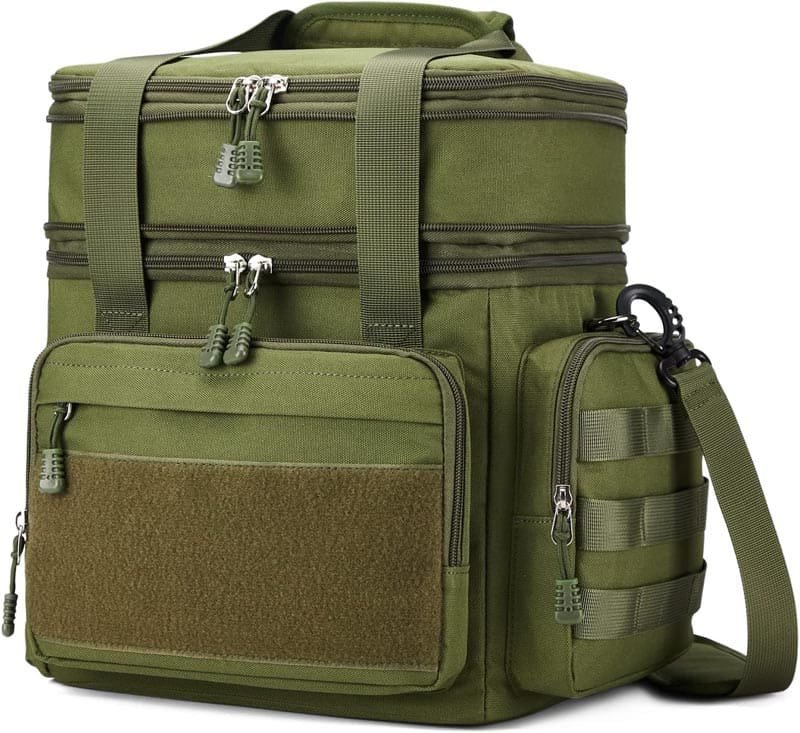
Insulated lunch bags come in a variety of styles to suit different lifestyles and needs. Here are some popular types:
- Soft-Sided Insulated Lunch Bags: Made from flexible materials like nylon or polyester with EVA foam insulation, these bags are lightweight, easy to carry, and perfect for everyday use by students or office workers.
- Hard-Sided Insulated Lunch Boxes: Constructed from rigid plastics or composites, these bags offer a structured design that maintains temperature consistently, ideal for children or office settings where durability is key.
- Backpack-Style Insulated Lunch Bags: Designed as backpacks, these bags allow hands-free carrying. They combine ample storage space with effective insulation, making them popular among commuters and active individuals.
- Tote-Style Insulated Lunch Bags: Offering a blend of fashion and function, tote-style bags often provide extra space for additional items. They are great for those who need a versatile, stylish option for daily use.
- Insulated Cooler Bags: Typically used for longer outings, these bags feature thicker insulation and multiple compartments to keep both food and beverages cool for extended periods.
| Type | Materials | Ideal For |
|---|---|---|
| Soft-Sided | Nylon/Polyester with EVA foam | Daily use, students, office workers |
| Hard-Sided | Rigid plastic or composite | Children, office settings, rigorous use |
| Backpack-Style | Flexible fabric with insulation | Commuters, active lifestyles |
| Tote-Style | Versatile fabrics, often with extra pockets | Fashion-conscious individuals, versatile use |
| Cooler Bags | Thick insulation, multi-compartment | Extended outings, picnics, long trips |
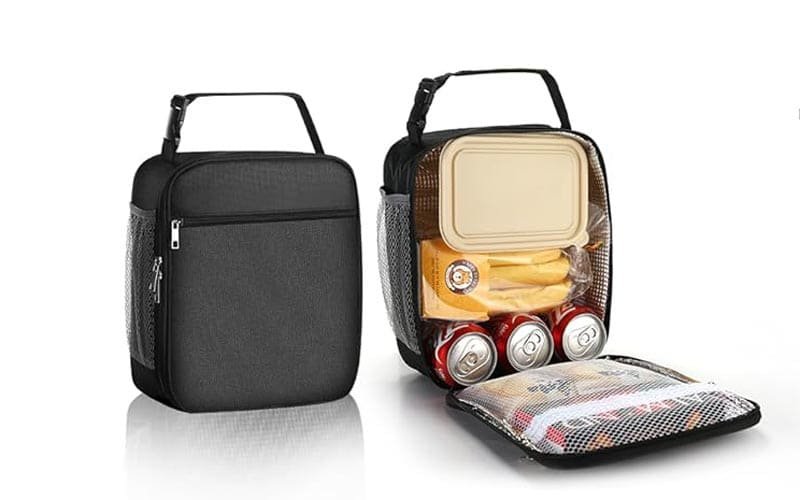
Conclusion & Custom Inquiry
Insulated lunch bags provide a practical, stylish solution for keeping your meals fresh and safe during busy days. They blend advanced insulation technology with lightweight design, making them an excellent choice for daily use, travel, and outdoor adventures.
At Szoneier, we’re experts in crafting high-quality, customizable cooler bags tailored to your specifications, free design consultations, and flexible production options.
Interested in designing your own custom insulated lunch bags? Contact Szoneier today for a personalized quote now.






